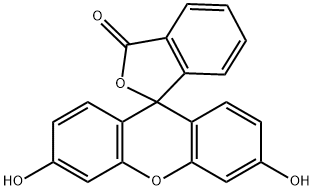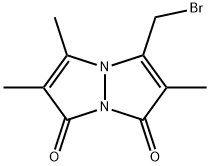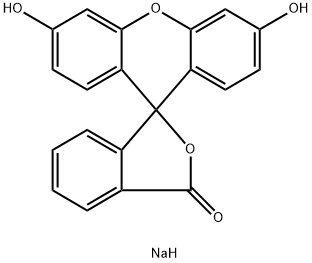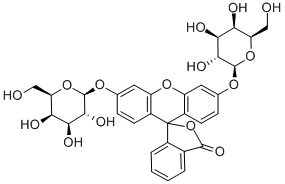LUCIFERASE
Synonym(s):Luciferase firefly
- CAS NO.:61970-00-1
- Molecular Weight: 0
- MDL number: MFCD00131546
- EINECS: 263-359-4
- Update Date: 2025-01-27 09:38:02
What is LUCIFERASE?
Description
Luciferase (firefly recombinant) is a light-generating enzyme that catalyzes an oxidative reaction, using luciferin, ATP, and molecular oxygen to produce oxyluciferin, which yields visible light. The bioluminescence of this ATP-dependent luciferase is commonly used in reporter systems that are amenable to high-throughput screening.
The Uses of LUCIFERASE
Luciferase from Photinus pyralis (firefly) has been used as a component of lysis solution to measure luminescence signals, as part of the study to determine chemical signals which can activate the karrikin insensitive 2 (KAI2) pathway.
The Uses of LUCIFERASE
Firefly luciferase is used extensively in molecular and cell biology, in particular for the efficient detection and quantitation of ATP and as a reporter for genetic function.
General Description
Firefly luciferase catalyzes the reaction of luciferin with ATP and leads to the production of yellow-green light. The enzyme has a molecular weight of 62kDa and is expressed in peroxisomes. Luciferase is considered as a model to study protein–anesthetic interactions. Firefly luciferase is highly useful in cell biology and molecular biology, as a reporter of gene function and for the quantification of ATP.
Biochem/physiol Actions
Firefly luciferase is a 62 kDa protein that catalyzes the production of light. The enzyme requires ATP, molecular oxygen, and the heterocyclic compound, firefly luciferin, to generate light in a two-step process. The light producing reaction is initiated by luciferin activation (adenylation of its carboxylate group) and proceeds in the presence of molecular oxygen to yield a photon of yellow-green light.
Properties of LUCIFERASE
| Flash point: | 111℃ |
| storage temp. | -20°C |
| form | powder |
| color | white |
Safety information for LUCIFERASE
| Signal word | Warning |
| Pictogram(s) |
 Exclamation Mark Irritant GHS07  Health Hazard GHS08 |
| GHS Hazard Statements |
H302:Acute toxicity,oral H373:Specific target organ toxicity, repeated exposure |
| Precautionary Statement Codes |
P260:Do not breathe dust/fume/gas/mist/vapours/spray. P264:Wash hands thoroughly after handling. P264:Wash skin thouroughly after handling. P270:Do not eat, drink or smoke when using this product. P314:Get medical advice/attention if you feel unwell. P301+P312:IF SWALLOWED: call a POISON CENTER or doctor/physician IF you feel unwell. P501:Dispose of contents/container to..… |
Computed Descriptors for LUCIFERASE
New Products
3-Iodophenylacetic acid 3-Pyridineacetonitrile, α-hydroxy- 2-Propanamine, 1-chloro-, hydrochloride (9CI) 3-(hexyloxy)-4-(pyridin-3-yl)-1,2,5-thiadiazole 2-Hexyn-1-ol Dibenzo-18-crown-6 Nickel(II) perchlorate hexahydrate, 98% 4-Bromophenylacetonitrile, 95% 3-Bromo-4-fluoroaniline, 97% Sodium tetraborate decahydrate, 98% Palladium(II) acetate, trimer, Pd 99% 4-Bromo-2-chlorotoluene, 97% N N Dimethylformamide Dimethyl Acetal (Dmf Dma) 2,3-Dichloro Benzoyl Cyanide [Side Chain] Bis(2-Chloroethyl) Amine Hydrochloride L-Glutamic Acid Diethyl Ester Hydrochloride 5-(Difluoromethoxy)-2-Mercaptobenzimidazole 1-Ethyl-3-(3-Dimethylaminopropyl)-Carbodiimide Hydrochloride [EDC Hcl] 1,4-Napthoquinone Bromoiodomethane Sodium Bicarbonate Methylene Dichloride (MDC) Ethyl Acetate Indole-3-Carbinol (I3C)Related products of tetrahydrofuran





![Fluorescein dicaprylate [Fluorescein dioctanoate]](https://img.chemicalbook.in/)


You may like
-
 Luciferase from Photinus pyralis (firefly) CAS 61970-00-1View Details
Luciferase from Photinus pyralis (firefly) CAS 61970-00-1View Details
61970-00-1 -
 17604-74-9 3-Pyridineacetonitrile, α-hydroxy- 98+View Details
17604-74-9 3-Pyridineacetonitrile, α-hydroxy- 98+View Details
17604-74-9 -
 131987-69-4 98+View Details
131987-69-4 98+View Details
131987-69-4 -
 Cyclohexane, (2-propynyloxy)- 67967-07-1 98+View Details
Cyclohexane, (2-propynyloxy)- 67967-07-1 98+View Details
67967-07-1 -
 764-60-3 2-Hexyn-1-ol 98+View Details
764-60-3 2-Hexyn-1-ol 98+View Details
764-60-3 -
 2-Propanamine, 1-chloro-, hydrochloride (9CI) 98+View Details
2-Propanamine, 1-chloro-, hydrochloride (9CI) 98+View Details
5968-21-8 -
 3-Iodophenylacetic acid 1878-69-9 98+View Details
3-Iodophenylacetic acid 1878-69-9 98+View Details
1878-69-9 -
 132945-75-6 (S)-1-Boc-3-methanesulfonyloxy-pyrrolidine 98+View Details
132945-75-6 (S)-1-Boc-3-methanesulfonyloxy-pyrrolidine 98+View Details
132945-75-6
